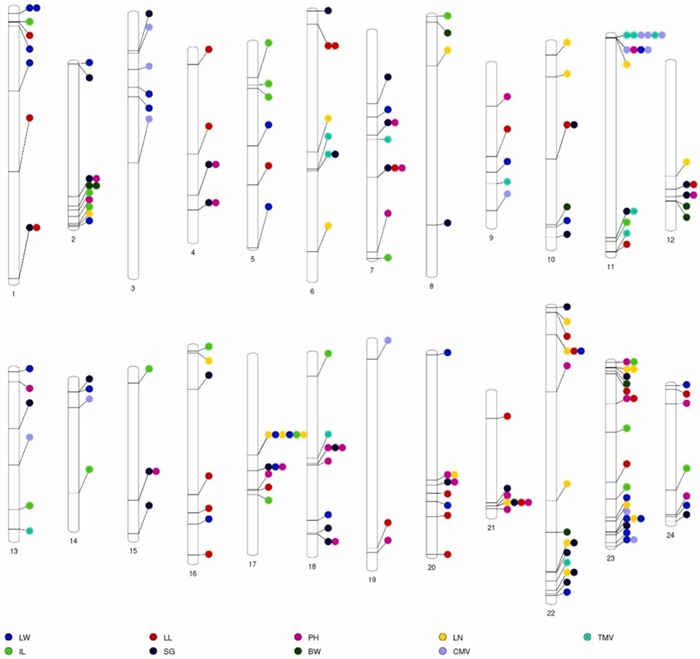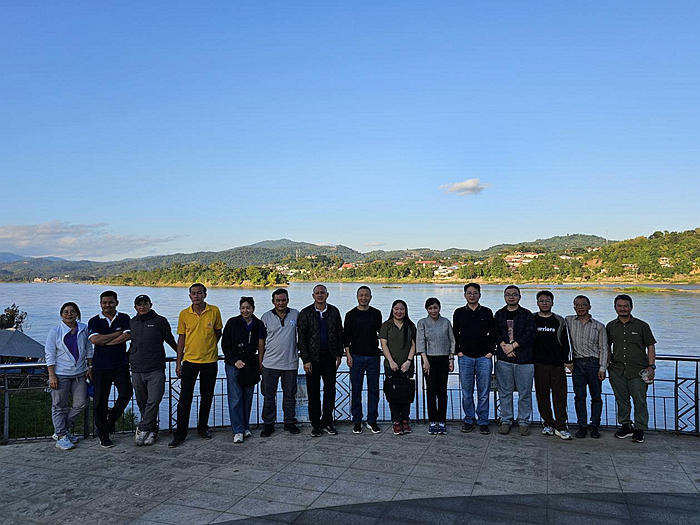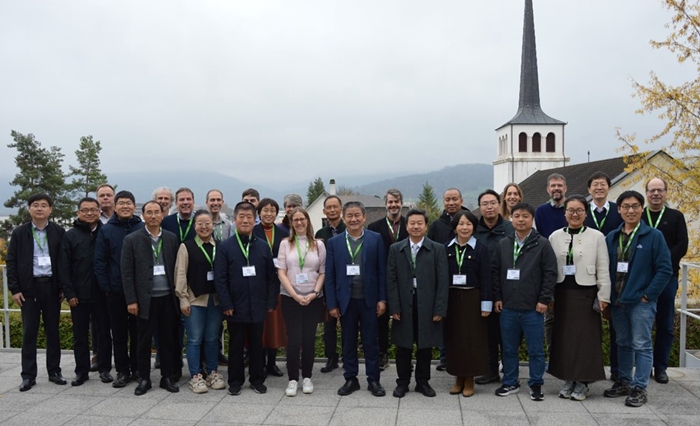Progress in developing tobacco chromosome segment substitution lines and QTL mapping for agronomic and disease resistance traits
Recently, researchers from Institute of Tobacco Research, Chinese Academy of Agricultural Sciences (TRI, CAAS),made progress indeveloping tobacco chromosome segment substitution lines (CSSLs) and QTL mapping for agronomic and disease resistance traits. The results were published as “Development of two sets of tobacco chromosome segment substitution lines and QTL mapping for agronomic and disease resistance traits” in Industrial Crops and Products .
As a permanent population, CSSLs are advantageous for both QTL fine mapping and breeding. CSSLs are genetic stocks representing the whole genome of donor genotypes in the background of usually an adapted variety, each ideal CSSL is expected to preserve the same genetic background as its recurrent parent and carry a few substituted segments from the donor parent. Compared with other genetic populations, it allows to completely remove the interference from genetic background and provides QTL visualization as a single Mendelian factor, which is beneficial to minor effects QTL dissection and epistasis analysis, although the development of CSSLs is laborious and time-consuming. In this study, we successfully developed two sets ofCSSL in tobacco, consisting of 245 and 128 unique lines, which serves as a valuable genetic resource for both basic research and molecular breeding. These CSSLs were generated using the recurrent parent K326 and donor parents OX2028 and Samsun, respectively. By performing QTL mapping across six agronomic traits and three disease resistance traits, we identified a total of 64 QTLs, including both previously reported loci and novel loci, with several being unique to our study. The identification of key QTLs, such as qLW1–1 for leaf width and qTMV11 for TMV resistance, underscores the potential of these CSSLs for fine mapping and gene discovery. The study also highlights the utility of CSSLs in dissecting minor-effect QTLs and understanding the genetic interactions. Furthermore, the genetic diversity captured in these CSSLs, especially in the context of different donor parents (OX2028 and Samsun), offers a promising avenue for broadening the genetic base of tobacco breeding. These lines can potentially be used to develop tobacco cultivars with improved agronomic traits and enhanced resistance to diseases, such as TMV, CMV, and bacterial wilt. Ultimately, our findings demonstrate the immense value of CSSLs in enhancing our understanding of tobacco’s complex genetic architecture and provide a strong basis for future breeding programs aimed at improving the quality and resilience of tobacco crops.

This work was financially supported byKey Science and Technology Projects of China National Tobacco Corporation(110202101001) and Youth Start-up Program of Tobacco Research Institute,Chinese Academy of Agricultural Sciences (1610232023014).
Link to publication:
https://www.sciencedirect.com/science/article/pii/S0926669025001682#sec0085
(By Huan Si, sihuan@caas.cn)
-
 Jan 21, 2025IAED-CAAS Delegation Visits Thailand for Scientific Cooperation
Jan 21, 2025IAED-CAAS Delegation Visits Thailand for Scientific Cooperation -
 Dec 12, 2024Chinese Academy of Agricultural Sciences (CAAS) is launching the NARS Capacity Building through China-Africa Research Partnership Program
Dec 12, 2024Chinese Academy of Agricultural Sciences (CAAS) is launching the NARS Capacity Building through China-Africa Research Partnership Program -
 Dec 05, 2024China-CABI Project Development Workshop Held in Delémont, Switzerland
Dec 05, 2024China-CABI Project Development Workshop Held in Delémont, Switzerland -
 Dec 05, 2024Ministerial Workshop on Digital Agriculture and Rural Revitalization for BRI Partner Countries Held at CAAS
Dec 05, 2024Ministerial Workshop on Digital Agriculture and Rural Revitalization for BRI Partner Countries Held at CAAS -
 Dec 05, 2024CIAR and FGV Deepen Cooperation to Promote the Development of China-Brazil Green Agricultural Products Value Chain
Dec 05, 2024CIAR and FGV Deepen Cooperation to Promote the Development of China-Brazil Green Agricultural Products Value Chain
